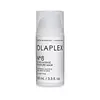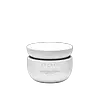What's inside
What's inside
 Key Ingredients
Key Ingredients

 Benefits
Benefits

 Concerns
Concerns

 Ingredients Side-by-side
Ingredients Side-by-side

Water
Skin ConditioningDimethicone
EmollientCetyl Alcohol
EmollientPersea Gratissima Oil
Skin ConditioningGlycerin
HumectantStearyl Alcohol
EmollientEthylhexyl Olivate
Skin ConditioningBehentrimonium Chloride
PreservativeCetrimonium Bromide
AntimicrobialLimnanthes Alba Seed Oil
Skin ConditioningOryza Sativa Bran Oil
EmollientQuaternium-80
Squalane
EmollientRosa Canina Seed Extract
EmollientCeramide AP
Skin ConditioningCeramide NP
Skin ConditioningHydrolyzed Jojoba Esters
Skin ConditioningSodium Hyaluronate
HumectantSodium PCA
HumectantBis-Aminopropyl Diglycol Dimaleate
Skin ConditioningArginine
MaskingJojoba Esters
EmollientPanthenol
Skin ConditioningCarthamus Tinctorius Seed Oil
MaskingCannabis Sativa Seed Oil
EmollientGlycine
BufferingAlanine
MaskingSerine
MaskingValine
MaskingIsoleucine
Skin ConditioningProline
Skin ConditioningThreonine
Guar Hydroxypropyltrimonium Chloride
Skin ConditioningHistidine
HumectantHydroxyethylcellulose
Emulsion StabilisingPhenylalanine
MaskingAspartic Acid
MaskingPCA
HumectantPhosphatidylcholine
EmulsifyingCitric Acid
BufferingSodium Lactate
BufferingEthylhexylglycerin
Skin ConditioningSodium Benzoate
MaskingPhenoxyethanol
PreservativeBis-Cetearyl Amodimethicone
Propylene Glycol
HumectantIsopropyl Alcohol
SolventSodium Nitrate
SoothingTocopherol
AntioxidantParfum
MaskingCitral
PerfumingHexyl Cinnamal
PerfumingLimonene
PerfumingWater, Dimethicone, Cetyl Alcohol, Persea Gratissima Oil, Glycerin, Stearyl Alcohol, Ethylhexyl Olivate, Behentrimonium Chloride, Cetrimonium Bromide, Limnanthes Alba Seed Oil, Oryza Sativa Bran Oil, Quaternium-80, Squalane, Rosa Canina Seed Extract, Ceramide AP, Ceramide NP, Hydrolyzed Jojoba Esters, Sodium Hyaluronate, Sodium PCA, Bis-Aminopropyl Diglycol Dimaleate, Arginine, Jojoba Esters, Panthenol, Carthamus Tinctorius Seed Oil, Cannabis Sativa Seed Oil, Glycine, Alanine, Serine, Valine, Isoleucine, Proline, Threonine, Guar Hydroxypropyltrimonium Chloride, Histidine, Hydroxyethylcellulose, Phenylalanine, Aspartic Acid, PCA, Phosphatidylcholine, Citric Acid, Sodium Lactate, Ethylhexylglycerin, Sodium Benzoate, Phenoxyethanol, Bis-Cetearyl Amodimethicone, Propylene Glycol, Isopropyl Alcohol, Sodium Nitrate, Tocopherol, Parfum, Citral, Hexyl Cinnamal, Limonene
Water
Skin ConditioningCetearyl Alcohol
EmollientPropanediol
SolventHydrogenated Ethylhexyl Olivate
EmollientButyrospermum Parkii Butter
Skin ConditioningBehentrimonium Chloride
PreservativeLactobacillus
Skin ConditioningAstrocaryum Murumuru Seed Butter
EmollientOlea Europaea Fruit Oil
MaskingSodium Hyaluronate
HumectantSqualane
EmollientAdansonia Digitata Seed Oil
EmollientArgania Spinosa Kernel Oil
EmollientBoswellia Carterii Resin Extract
MaskingHyssopus Officinalis Leaf Oil
Skin ConditioningMoringa Oleifera Seed Oil
EmollientNigella Sativa Seed Oil
EmollientOrbignya Speciosa Kernel Oil
EmollientCitrullus Lanatus Seed Oil
EmollientHydrogenated Olive Oil Unsaponifiables
EmollientHelianthus Annuus Seed Extract
Skin ConditioningC9-12 Alkane
SolventCetrimonium Chloride
AntimicrobialPolyquaternium-10
Stearalkonium Chloride
PreservativeCetyl Hydroxyethylcellulose
Emulsion StabilisingPhytic Acid
Caramel
Cosmetic ColorantCoco-Caprylate/Caprate
EmollientCitric Acid
BufferingParfum
MaskingPotassium Sorbate
PreservativePhenoxyethanol
PreservativeDipropylene Glycol
HumectantStearyl Alcohol
EmollientSilica Dimethyl Silylate
EmollientHydrated Silica
AbrasiveSodium Phosphate
BufferingDisodium Phosphate
BufferingTocopherol
AntioxidantLinalool
PerfumingWater, Cetearyl Alcohol, Propanediol, Hydrogenated Ethylhexyl Olivate, Butyrospermum Parkii Butter, Behentrimonium Chloride, Lactobacillus, Astrocaryum Murumuru Seed Butter, Olea Europaea Fruit Oil, Sodium Hyaluronate, Squalane, Adansonia Digitata Seed Oil, Argania Spinosa Kernel Oil, Boswellia Carterii Resin Extract, Hyssopus Officinalis Leaf Oil, Moringa Oleifera Seed Oil, Nigella Sativa Seed Oil, Orbignya Speciosa Kernel Oil, Citrullus Lanatus Seed Oil, Hydrogenated Olive Oil Unsaponifiables, Helianthus Annuus Seed Extract, C9-12 Alkane, Cetrimonium Chloride, Polyquaternium-10, Stearalkonium Chloride, Cetyl Hydroxyethylcellulose, Phytic Acid, Caramel, Coco-Caprylate/Caprate, Citric Acid, Parfum, Potassium Sorbate, Phenoxyethanol, Dipropylene Glycol, Stearyl Alcohol, Silica Dimethyl Silylate, Hydrated Silica, Sodium Phosphate, Disodium Phosphate, Tocopherol, Linalool
 Reviews
Reviews

Ingredients Explained
These ingredients are found in both products.
Ingredients higher up in an ingredient list are typically present in a larger amount.
This ingredient is a preservative and often used for it's anti-static properties. You'll most likely see this ingredient in hair conditioners.
It does not cause irritation or sensitization in leave-on products at 1-5%.
Citric Acid is an alpha hydroxy acid (AHA) naturally found in citrus fruits like oranges, lemons, and limes.
Like other AHAs, citric acid can exfoliate skin by breaking down the bonds that hold dead skin cells together. This helps reveal smoother and brighter skin underneath.
However, this exfoliating effect only happens at high concentrations (20%) which can be hard to find in cosmetic products.
Due to this, citric acid is usually included in small amounts as a pH adjuster. This helps keep products slightly more acidic and compatible with skin's natural pH.
In skincare formulas, citric acid can:
While it can provide some skin benefits, research shows lactic acid and glycolic acid are generally more effective and less irritating exfoliants.
Most citric acid used in skincare today is made by fermenting sugars (usually from molasses). This synthetic version is identical to the natural citrus form but easier to stabilize and use in formulations.
Read more about some other popular AHA's here:
Learn more about Citric AcidParfum is a catch-all term for an ingredient or more that is used to give a scent to products.
Also called "fragrance", this ingredient can be a blend of hundreds of chemicals or plant oils. This means every product with "fragrance" or "parfum" in the ingredients list is a different mixture.
For instance, Habanolide is a proprietary trade name for a specific aroma chemical. When used as a fragrance ingredient in cosmetics, most aroma chemicals fall under the broad labeling category of “FRAGRANCE” or “PARFUM” according to EU and US regulations.
The term 'parfum' or 'fragrance' is not regulated in many countries. In many cases, it is up to the brand to define this term.
For instance, many brands choose to label themselves as "fragrance-free" because they are not using synthetic fragrances. However, their products may still contain ingredients such as essential oils that are considered a fragrance by INCI standards.
One example is Calendula flower extract. Calendula is an essential oil that still imparts a scent or 'fragrance'.
Depending on the blend, the ingredients in the mixture can cause allergies and sensitivities on the skin. Some ingredients that are known EU allergens include linalool and citronellol.
Parfum can also be used to mask or cover an unpleasant scent.
The bottom line is: not all fragrances/parfum/ingredients are created equally. If you are worried about fragrances, we recommend taking a closer look at an ingredient. And of course, we always recommend speaking with a professional.
Learn more about ParfumPhenoxyethanol is a preservative that has germicide, antimicrobial, and aromatic properties. Studies show that phenoxyethanol can prevent microbial growth. By itself, it has a scent that is similar to that of a rose.
It's often used in formulations along with Caprylyl Glycol to preserve the shelf life of products.
Sodium Hyaluronate is hyaluronic acid's salt form. It is commonly derived from the sodium salt of hyaluronic acid.
Like hyaluronic acid, it is great at holding water and acts as a humectant. This makes it a great skin hydrating ingredient.
Sodium Hyaluronate is naturally occurring in our bodies and is mostly found in eye fluid and joints.
These are some other common types of Hyaluronic Acid:
Learn more about Sodium HyaluronateSqualane is an emollient that helps the skin hold onto moisture. It's an oily liquid that occurs naturally in certain types of fish and plant oils.
Because squalane boosts hydration in the skin, it also comes with plenty of benefits: it is an antioxidant and can help fight free radicals and skin damage. Squalane is also found to have a detoxifying effect when applied.
Squalane comes from squalene, which occurs naturally within the sebum of our skin. It is one of the oils our skin produces to keep itself hydrated. Squalane is the hydrogenated version of squalene and has a longer shelf life.
Research shows that squalane is non-irritating (even at 100% concentration).
In general, it's a fantastic ingredient. It does a great job at hydrating the skin, and it's suitable for those with sensitive skin.
The source of squalane may impact malassezia / fungal acne. This is because olive oil derived squalane can contain impurities such as fatty acids and plant waxes. Sugarcane derived squalane is recommended for anyone with malassezia concerns.
Is squalane vegan?
This depends on the source. Squalane can be derived from both plants and animals. Most squalane used in skincare comes from plants.
Please note: the source of squalane is only known if disclosed by the brand. We recommend reaching out to the brand if you have any questions about their squalane.
Read more about squalene with an "e".
Is squalane an oil?
Squalane is often called an oil, but it’s technically not; it’s a hydrocarbon, meaning it’s only made of carbon and hydrogen, unlike true oils which are triglycerides made of fatty acids and glycerol.
The term “oil-free” isn’t regulated, so companies can define it however they want. Some exclude all oils, while others just avoid mineral oil or comedogenic oils.
While some people avoid oils thinking they cause breakouts, the right kind of oil (or oil-like ingredient like squalane) can actually help balance and hydrate your skin. It’s worth testing out simple oils or squalane to see what works best for your skin.
Learn more about SqualaneStearyl Alcohol is a type of fatty alcohol from stearic acid. It is a white, waxy compound used to emulsify ingredients.
Fatty Alcohols are most often used as an emollient or to thicken a product. Emollients help soothe and hydrate the skin by trapping moisture.
They are usually derived from natural fats and oils and therefore do not have the same drying or irritating effect as solvent alcohols. FDA allows products labeled "alcohol-free" to have fatty alcohols.
Learn more about Stearyl AlcoholTocopherol (also known as Vitamin E) is a common antioxidant used to help protect the skin from free-radicals and strengthen the skin barrier. It's also fat soluble - this means our skin is great at absorbing it.
Vitamin E also helps keep your natural skin lipids healthy. Your lipid skin barrier naturally consists of lipids, ceramides, and fatty acids. Vitamin E offers extra protection for your skin’s lipid barrier, keeping your skin healthy and nourished.
Another benefit is a bit of UV protection. Vitamin E helps reduce the damage caused by UVB rays. (It should not replace your sunscreen). Combining it with Vitamin C can decrease sunburned cells and hyperpigmentation after UV exposure.
You might have noticed Vitamin E + C often paired together. This is because it is great at stabilizing Vitamin C. Using the two together helps increase the effectiveness of both ingredients.
There are often claims that Vitamin E can reduce/prevent scarring, but these claims haven't been confirmed by scientific research.
Learn more about TocopherolWater. It's the most common cosmetic ingredient of all. You'll usually see it at the top of ingredient lists, meaning that it makes up the largest part of the product.
So why is it so popular? Water most often acts as a solvent - this means that it helps dissolve other ingredients into the formulation.
You'll also recognize water as that liquid we all need to stay alive. If you see this, drink a glass of water. Stay hydrated!
Learn more about Water